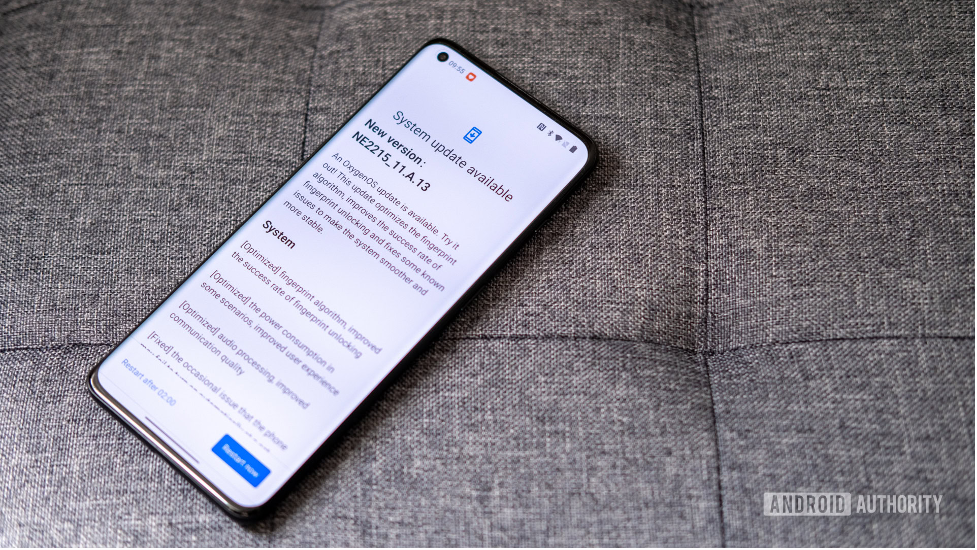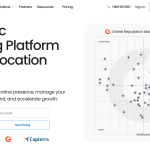When you think of Android development today, images of massive corporate campuses with armies of developers tapping away at keyboards might come to mind. But the real magic? It often happens far from the spotlight. Tucked into the vibrant business scene of Columbia, South Carolina, Web Design Columbia (WDC) has quietly proven that you don’t need a billion-dollar budget or a Google-sized team to create stunning, efficient Android apps. You just need expertise, smart choices, and nearly two decades of hard-earned experience, with a healthy dash of humor to survive the occasional caffeine shortage.
My journey to uncover how affordable, high-quality Android development is flourishing right here in Columbia starts with an essential truth: good mobile apps are no longer optional. They are the handshake, the storefront, and sometimes even the lifeblood of modern businesses. But with rising global dev costs, AI reshaping the way we work, and a dozen new frameworks popping up every year, the path from concept to polished app can feel less like a smooth highway and more like hiking barefoot across a field of Lego bricks.
Luckily, as I quickly learned, teams like WDC know exactly how to keep the process efficient, affordable, and—most importantly—successful.
The Global Reality Check: Mobile Development Isn’t Getting Cheaper
Let’s start with some tough love: the myth that mobile app development costs are coming down because of “better technology” is about as true as saying a microwave makes a gourmet chef. Globally, Android app development costs have actually risen by around 15% year-over-year since 2020, according to Statista, as clients demand sleeker designs, faster performance, and tighter security standards.
When I dug into mobile development statistics, I found something fascinating: over 70% of mobile apps today are developed using hybrid frameworks like Flutter or React Native, hoping to cut costs. Yet, according to a 2024 Gartner study, only about 42% of hybrid apps perform at native-level speed and quality. Meaning? Saving money upfront often leads to extra headaches (and invoices) later when things like responsiveness and offline functionality start to matter.
That’s why companies like Web Design Columbia focus primarily on native or highly optimized cross-platform Android solutions, not just chasing the latest hype. Their affordable Android development in Columbia is not about cutting corners — it’s about making smart, seasoned technical decisions from day one.
Android Development in Columbia: Why Local Knowledge Wins
Now, why should a business pick a team in Columbia for Android development rather than an overseas freelancer offering rates that look too good to be true? The answer lies partly in cultural understanding, partly in legal accountability, but mostly in real-world results.
Having nearly 20 years of battle-tested development history, WDC understands that building mobile apps isn’t just about coding; it’s about aligning with real human behavior, local markets, and business realities. Android development in Columbia benefits enormously from this “boots-on-the-ground” advantage. Columbia’s tech scene is growing steadily, but it maintains the close-knit, client-focused mindset that tech giants sometimes forget.

Also, there’s another simple but critical point: timezone synchronicity matters. When you need a quick tweak or emergency fix, it’s a lot more comforting knowing your developers aren’t fast asleep twelve time zones away. Trust me — anyone who has tried managing a 3:00 a.m. app launch bug fix with a developer sipping coffee in another hemisphere knows the pain.
Lessons from the Code Trenches: The Secret Sauce of Efficient Android Apps
I noticed when spending time with WDC’s team that they live and breathe code optimization, but not in the “throw more plugins at it” way. Their affordable Android development in Columbia is based on avoiding mistakes that many newer developers still make globally.
A surprisingly high number of Android apps today still suffer from bloated codebases. In fact, according to a 2023 survey from the Android Developers Blog, about 30% of published apps carry unnecessary libraries or outdated dependencies that slow them down. This is like trying to win a marathon wearing a backpack full of rocks.
WDC avoids this by implementing modularization early. Rather than building one massive codebase, they split features into independent modules, making apps easier to maintain, faster to load, and cheaper to update later. They also prioritize using Jetpack Compose, Google’s newer toolkit for building native UIs, which reduces boilerplate code by up to 35% compared to older methods like XML layouts.
However, it’s not all roses. Jetpack Compose, despite being praised worldwide, sometimes struggles with complex animations and can still carry unexpected memory leaks if not appropriately handled — something less experienced developers often miss. At WDC, they’ve already navigated those hurdles, smoothing over potential bumps for their clients.
Cool Mobile Tools: What’s Actually Worth Using (And What’s Not)
The world is drowning in new mobile dev tools, and it’s honestly overwhelming. Every month brings a new platform promising to “revolutionize development forever.” Spoiler alert: most don’t.
During my conversations about Android development in Columbia, I was impressed by WDC’s careful, almost ruthless selection of tools. They embrace technology when it truly improves outcomes, not just to look trendy on LinkedIn.
For instance, they use Firebase for push notifications and real-time analytics, ensuring apps are built with user behavior in mind. They also integrate Crashlytics for efficient crash reporting, saving dozens of hours chasing obscure bugs after launch.
That said, even good tools can backfire if misused. Firebase, while incredibly powerful, can lead to surprisingly high data costs if developers don’t properly manage event tracking. WDC learned this lesson early and has incorporated it into its quality control practices to avoid surprises for its clients.
If you want deeper technical mobile development insights, check out their great mobile app development approach. They prioritize technical wisdom over marketing jargon.
The Hard Reality: Not Every App Should Be Built
One of the most refreshing things I heard from Web Design Columbia was this: sometimes the best decision is not to build an app at all. That’s right — a development company that doesn’t blindly push you into spending more money.
Globally, the failure rate for mobile apps remains painfully high. As of 2024, around 80% of mobile apps are abandoned after just one use. Think about that. You could spend $50,000+ building a shiny new app only for users to ghost it faster than a bad Tinder match.
WDC’s long experience means they’re brutally honest when a client’s idea needs reworking — or shelving altogether. They’d rather pivot early to a web app, progressive web app (PWA), or even reframe the project before wasting budget and goodwill. This isn’t just good ethics; smart business cements long-term trust.

And when they do greenlight a project, their Android development in Columbia is laser-focused on ensuring there’s a viable market fit, performance optimization from day one, and a realistic maintenance roadmap.
Global Inspiration: How Netflix, Uber, and Other Giants Optimize Their Android Apps
When considering Android app optimization, it’s easy to assume the magic belongs only to mega-brands like Netflix, Uber, or Spotify. After all, they have budgets bigger than some countries’ GDPs. But what’s fascinating — and what the Android development community in Columbia understands deeply — is that many of their techniques are replicable even on much smaller budgets.
Take Netflix, for example. Their app famously uses an extreme form of lazy loading. Instead of loading everything the second you open it, it prioritizes only what’s needed for the current user session—no more, no less. Their Android team even published papers showing that optimizing image load strategies saved them hundreds of thousands of dollars per year in server bandwidth.
Similarly, Uber’s engineering blog revealed that they moved to RIBs architecture (Router, Interactor, Builder) to keep their Android app modular and scalable. It’s not a plug-and-play framework; it requires planning and a good understanding of software architecture. Still, it’s a principle that experienced teams like Web Design Columbia can adapt when creating scalable local apps, ensuring that even an app launched for a Columbia-based business can handle future growth without crumbling under its weight.
The lesson? The same techniques powering apps on millions of phones worldwide are accessible for Android development in Columbia — provided you have a team that knows how to implement them correctly without inflating your budget unnecessarily.
Affordable Doesn’t Mean “Cheap”: It Means “Smart”
One thing I want to clarify is that a conversation keeps resurfacing among business owners in Columbia and across South Carolina. When WDC talks about affordable Android development, they don’t mean bargain-bin coding that cuts every corner. They mean intelligent project planning, realistic scoping, and efficient execution.
The global mobile development scene has created two extremes: massive overengineering (adding blockchain to a simple to-do list app, anyone?) or reckless underengineering (where apps crash if the user so much as breathes on them wrong). Affordable Android development in Columbia stands proudly in the middle — pragmatic, experienced, and well-tested.
For example, WDC routinely audits third-party libraries before adding them to a project. According to Snyk’s 2024 security report, about 63% of mobile vulnerabilities come from outdated or poorly maintained open-source dependencies. Keeping dependency trees lean and updated significantly reduces future technical debt and security risks, a critical factor when the Google Play Store has gotten way stricter about app security policies.
Real-World Story: When “Faster and Cheaper” Went Wrong (Somewhere Else)
I can’t resist sharing a funny — and painful — story. I recently interviewed a small retail chain based near Columbia that decided to “go cheap” and hire an overseas developer found through a Facebook group. For $2,000, they were promised a full-featured Android app with e-commerce integration, loyalty programs, and — get this — even AI-driven recommendations.
What they got was an app that crashed when opening the second screen. Worse, the app size was a whopping 170MB — bigger than Instagram’s Android app. No modularization. No compression. Just endless bloat and a painful lesson in “you get what you pay for.”
Guess who they called next? That’s right—Web Design Columbia. WDC not only rebuilt their app from scratch but also reduced its size to under 30MB, improved load times by over 400%, and helped relaunch it on the Play Store—all at a surprisingly fair price, backed by actual guarantees and real support.
Stories like this aren’t rare. In fact, Clutch’s 2024 survey showed that about 53% of businesses that outsourced mobile app development overseas had to redo significant parts of their apps within the first year.
It’s a potent reminder of why local Android development in Columbia,with real accountability, face-to-face meetings, and a professional record that stretches back almost twenty years,—often saves money and sanity.
Columbia’s Unique Mobile Vibe: Creative, Resilient, and Results-Focused
Columbia, South Carolina, isn’t trying to become Silicon Valley (thank goodness). Its mobile development community reflects a very different spirit rooted in resilience, creativity, and pragmatism.
Unlike hyper-saturated markets where developers juggle ten clients simultaneously while moonlighting on side projects, the Android development in Columbia ecosystem values relationship-driven work. WDC exemplifies this: they treat every client as a long-term partner, not just a quick project. You can see it in their process — from initial discovery meetings through careful wireframing and architecture planning, all the way to rigorous user testing before public launches.
In fact, Web Design Columbia’s internal testing benchmarks often exceed Google’s Android Vitals recommendations. They aim for frame rendering times under 16ms (to guarantee buttery-smooth animations) and network requests optimized to prioritize mobile-first users — a detail that often gets ignored elsewhere but heavily affects real-world app retention rates.
The Hidden Upside: Choosing Experience Over Hype
One of the weird paradoxes of the tech world is that newer isn’t always better. While fresh frameworks and APIs can be exciting, they often have hidden instability. Remember Google’s Fuchsia project? It was hyped as the Android killer… and then quietly faded into near obscurity without ever replacing Android.
The same goes for mobile development practices. Jumping on every shiny trend can leave apps tangled in early deprecation cycles, insecure libraries, or abandoned toolchains.
With nearly 20 years of real-world experience, WDC avoids those traps. They evaluate new technologies carefully but stick to proven foundations unless a real, measurable benefit exists. This pragmatic conservatism in Android development in Columbia ensures that apps don’t just look good on launch day—they stay reliable, scalable, and maintainable for years to come.
The Smart Path Forward
If you’re a business owner, startup founder, or dreamer looking to turn an idea into a real Android app, it’s tempting to chase low sticker prices or be dazzled by trendy tech jargon. But the truth is, successful app development — the kind that’s fast, efficient, and affordable without sacrificing quality — is rare.
Yet it’s alive and well here in Columbia, South Carolina. Web Design Columbia has spent nearly two decades building that rare blend of technical excellence, pragmatic planning, and client-first relationships. Their mobile development work isn’t about following fads but delivering results—intelligently, affordably, and reliably.
If you’re looking for quality mobile development work, it might be time to think local. Think Columbia. Think WDC.
Because in the wild world of Android development, finding a team that genuinely cares about your app’s future is the secret weapon.
Lynn Martelli is an editor at Readability. She received her MFA in Creative Writing from Antioch University and has worked as an editor for over 10 years. Lynn has edited a wide variety of books, including fiction, non-fiction, memoirs, and more. In her free time, Lynn enjoys reading, writing, and spending time with her family and friends.















